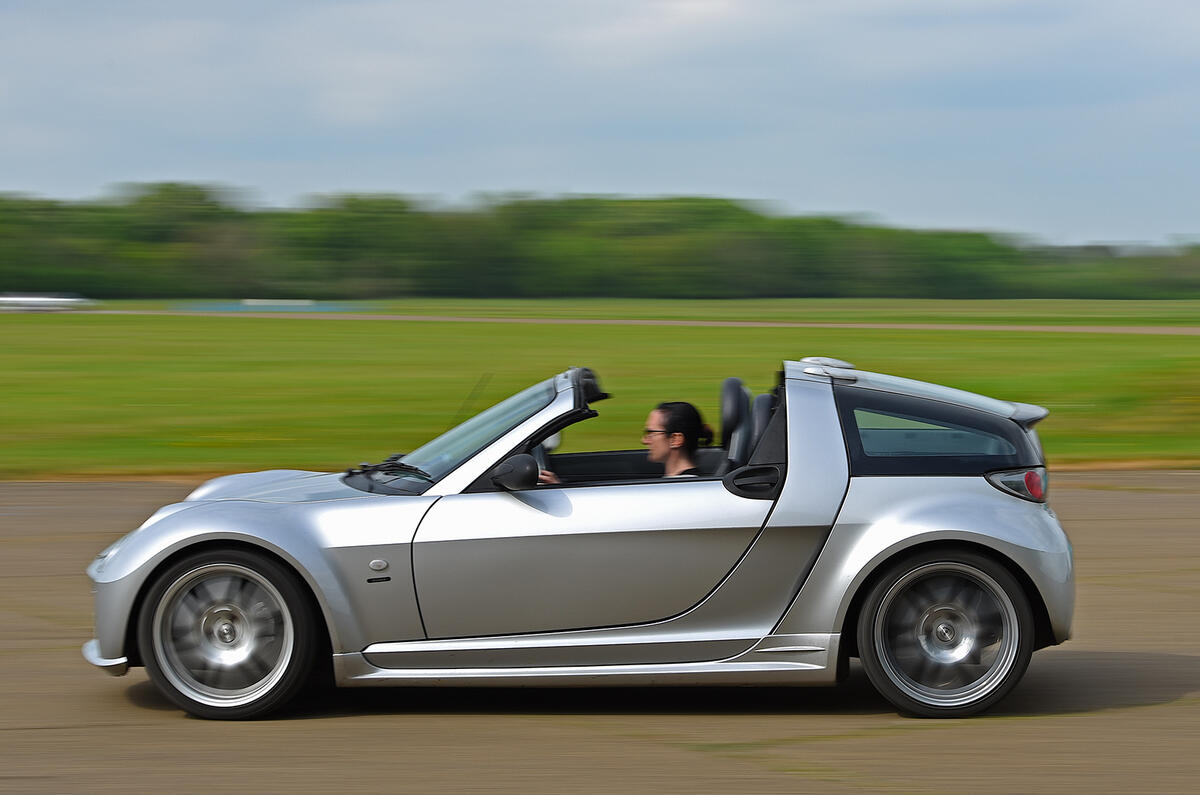The pauses didn’t help, nor not knowing quite when they’d come. And there was more than one kind of pause to be experienced aboard a Smart Roadster.
The most obvious, and persistent, was the between-gears interruption generated by the automated manual transmission. The Roadster’s gearbox was not an especially speedy shuffler of clustered cogs and its six gears meant that, unless cruising, you’d experience perpetual ascents and descents of its generous ratio set. And if you left the ’box to think about its own shifting, you’d find that you were never quite ready for the moment when it chose to cut the power supply from the mid-mounted triple, even with familiarity.
There were dynamic hesitations too. This was an exceptionally light, mid-engined sports car that ought to have changed direction like a dragonfly. Spear a bend, and in the first instant you’d think it was going to do just that, the front wheels eagerly steering a new trajectory. But then the Smart’s athleticism would start to evaporate. You couldn’t call it understeer, but if you were expecting Lotus Elise balletics, well, you’d have to buy the real thing.
There was more, besides – the Roadster’s traction control dropping the curtain on any on-the-limit expeditions before they really started. It looked like a sports car, and an exciting one at that, but the Roadster’s cornerus interruptus methods protected its occupants from almost all kinds of on-the-road excitements. Still, after Mercedes’ adventures with toppling A-Classes and Smart Fortwos accelerating hard enough to land flat on their backs, you could understand the caution.
In plenty of other ways, though, the Roadster was the result of some admirably brave decisions. The bold Smart project wobbled for more than stability reasons, the two-seat city car falling massively short of sales expectations following its (delayed) 1998 debut, but that didn’t stop the Roadster project going ahead. Indeed, this dinky little device promised to deal with Smart’s mild glamour deficit.
It was also admirably true to the Fortwo’s construction concept. There was the so-called Tridion safety cell, this the pressed steel inner tub that provided a structure from which to hang the suspension, powertrain and a colourful collection of composite body panels. The engine was the same lively 698cc turbo triple that powered the Fortwo, its 80bhp impressive for one so small, and less burdened than it might have been with only 815kg to shove along.
The Roadster benefited from Smart’s appealingly distinct cabin furnishing schemes too, chunks of its dashboard sheathed with non-reflective cloth. Much of it was grey, but there were multiple shades of the stuff and you could give the interior ambience a cheerfully spectacular lift by specifying orange cloth. And like the Fortwo’s, the Roadster’s instrument pods were so shapely that you wanted to pick them up.





Join the debate
Add your comment
One thing which has not been mentioned is the lack of Roadster specific parts, Mercedes Benz are no longer supporting the car .
Shame that they cocked its cars engineering, it's still cooler than Antarctica. Probably not ULEZ compliant, so not worth me thinking about.
Just checked my reg in the ULEZ vehicle checker, it is ULEZ compliant
Had my current one for 6 years, and its great fun. The gearbox is no where near as bad as everyone makes it out to be. You have to learn to drive it differently, thats all. Once you do learn how to get the best out of the gearbox, the rest comes alive.